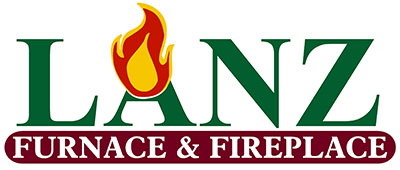
If you’re thinking over air conditioner installation in Monroe, you should also be investigating your new air conditioner’s SEER rating.
SEER is short for Seasonal Energy Efficiency Rating. In summary, it looks at how productive your air conditioner is at changing electricity into chilled air. A bigger number means your air conditioner is more efficient, which is excellent for your electrical costs.
However, there are a lot of differing models out there for air conditioners. And a better SEER rating typically is accompanied by a higher price. So, how can you find out which one is ideal for your home?
At Lanz Furnace and Fireplace, we provide a free, no-pressure home comfort analysis. You can schedule one by contacting us at 608-291-3606. Our skilled air conditioner installers will collaborate with you to help you pick the right air conditioner for your home. Plus, they’ll also offer you a free, no-obligation estimate.
In the meantime, let’s go over SEER ratings and how they can influence your loved ones’ comfort. And your utility bills.
Why Do the SEER Ratings Even Matter?
In 2016, the federal government created new SEER rules. New air conditioners must be at least 13 SEER in the northern United States and 14 SEER in the southeast and southwest. If you’re unsure when you had your air conditioner replaced or what its SEER ranking is, you can find the sticker on the condenser outside your residence. If you can’t find the sticker, you can give us a call at 608-291-3606 for assistance.
If your air conditioner was put in prior to that year, it’s likely much less efficient. Air conditioning technology has rapidly changed in the past several years, with big developments in energy efficiency and smart home compatibility. Connecting your new air conditioner with a smart thermostat could help you spend less on AC bills, since the thermostat can seamlessly change your temperature settings when you’re away.
If your existing air conditioner has a SEER rating between 8 and 10, adding a 14-SEER system could save you around 30–50% on annual cooling expenses. Your savings are tied to your air conditioner size and your temperature settings.
Is the highest SEER Rating the Best?
An air conditioner with a better SEER rating will be more efficient at consuming electricity for cooling. The most efficient systems, which can go as big as 26 SEER, carry ENERGY STAR® endorsement. This endorsement means the air conditioner meets EPA requirements for energy savings and environmental conservation.
While ENERGY STAR air conditioners are often more costly, you’ll usually get the difference repaid over the years through smaller power costs. These air conditioners, which are usually rated 16 SEER and greater, need about 8% less power than other new systems, according to ENERGY STAR.
One of the greatest differences between a 14 SEER and 16 SEER is variable-speed capability. A variable-speed air conditioner can operate at varying speeds. This fine-tunes comfort for your loved ones while keeping your air conditioning bills down. It can also keep temperatures and humidity more consistent, since it can work for longer without requiring a lot more energy.
When getting a variable-speed air conditioner, you’ll want to make sure that your furnace or air handler is compatible. This is due to the fact your air conditioner depends on this system’s blower to send chilled air throughout your home. Furnaces only run for approximately 20 years, so if yours is around that age, we advise getting furnace installation at the same time so you can receive all the advantages of your variable-speed air conditioner.
When you’re prepared to replace your air conditioner, the cooling specialists at Lanz Furnace and Fireplace are here to support you. Give us a call at 608-291-3606 to request your free home comfort analysis now.


